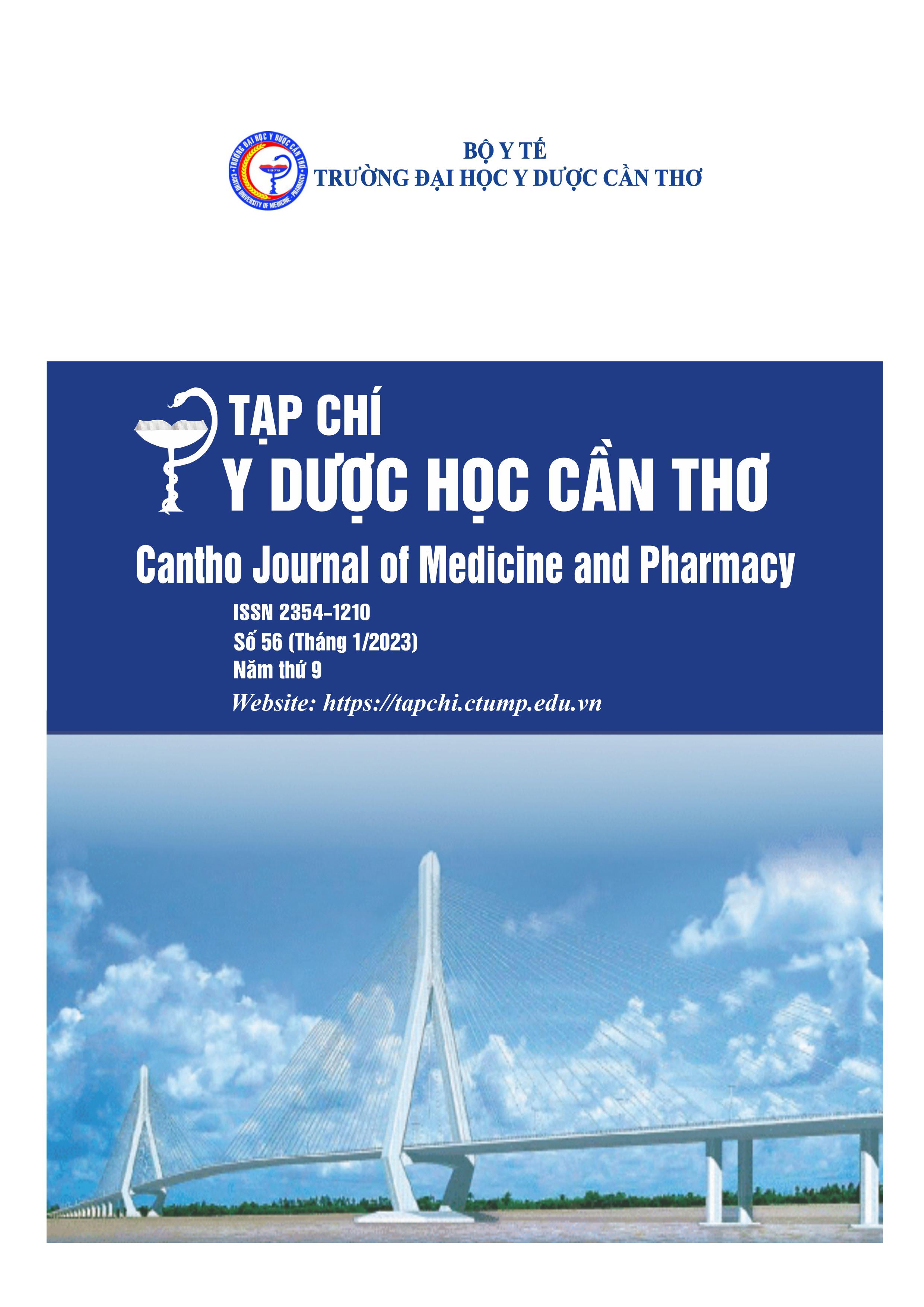SHORT-TERM OUTCOMES OF CEMENT VERTEBROPLASTY IN OSTEOPOROTIC COMPRESSION FRACTURE IN CAN THO IN 2021 -2022
Main Article Content
Abstract
Background: Compressive fracture of the vertebral spine often leads to severe back pain and disability. Cement vertebroplasty was considered the standard treatment for this condition. Objectives: To describe the short-term outcomes of vertebroplasty in an osteoporotic compressive fracture in Can Tho city from March 2021 to June 2022. Materials and methods: This was a descriptive study of 50 patients who had compressive fracture of osteoporotic vertebral spine and underwent cement vertebroplasty at Can Tho city. All results and complications after cement injection at 24 hours and 3 months were recorded according to the Visual Analog Scale and Macnab score. Results: There were 50 patients with 74 vertebrae cemented with an average amount of cement per vertebra of 4.7 ± 1.33 ml. The rate of cement infiltration in the vertebral body from 1/3 or more accounted for 90.6%. At 24 hours after injection, VAS score was 4.14 ± 1.11 points. The rate of complications from cement injection accounted for 9.5%, in these patients, no clinical symptom was recorded. The average Macnab score after 3 months with very good and good accounted for 88%. Conclusions: Bio-cement injection into the vertebrae is considered an effective and safe treatment for osteoporotic compressive fracture.
Article Details
Keywords
osteoporosis, VAS scale (Visual Analogue Scale), Macnab scale, vertebroplasty
References
2. Đỗ Mạnh Hùng, Nguyễn Văn Thạch, Đinh Ngọc Sơn (2009), Đánh giá kết quả tạo hình thân đốt sống bằng bơm cement sinh học ở bệnh nhân xẹp đốt sống do loãng xương và chấn thương cột sống. Y học thực hành, 692+693, tr. 316-322.
3. Khúc Văn Trung, Nguyễn Vũ Hoàng (2018), Kết quả điều trị xẹp thân đốt sống trên bệnh nhân loãng xương bằng phương pháp bơm cement sinh học qua da tại Bệnh viện Trung ương Thái Nguyên. Luận văn thạc sĩ, Trường Đại học Thái Nguyên, Thái Nguyên.
4. Breivik Harald, PC Borchgrevink, SM Allen, et al. (2008), Assessment of pain. British Journal of Anaesthesia, 101 (1), pp. 17-24.
5. Brodano Giovanni Barbanti, Luca Amendola, Konstantinos Martikos, et al. (2011), "Vertebroplasty: benefits are more than risks in selected and evidence-based informed patients. A retrospective study of 59 cases". European Spine Journal, 20 (8), pp. 1265-1271.
6. Huang, Ching-Hui et al. (2018), Risk of venous thromboembolism in elderly patients with vertebral compression fracture: A population-based case-control study. Medicine, vol. 99,18: e20072.
7. Lim, Jeongwook et al. (2018), Posttraumatic Delayed Vertebral Collapse: Kummell's Disease. Journal of Korean Neurosurgical Society, 61(1), pp. 1-9.
8. Mathis, J.M, et al. (2001), Percutaneous vertebroplasty: a developing standard of care for vertebral compression fractures. American journal of neuroradiology. 22(2), pp. 373-381.
9. McGirt Matthew J, Scott L Parker, Jean-Paul Wolinsky et al. (2009), Vertebroplasty and kyphoplasty for the treatment of vertebralcompression fractures: an evidenced-based review of the literature, The Spine Journal, 9 (6), pp. 501-508.
10. Pai, Muralidhar V (2017), Osteoporosis Prevention and Management. Journal of obstetrics and gynaecology of India, 67(4), pp. 237-242.


